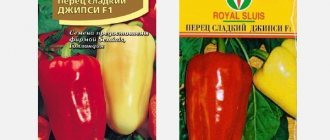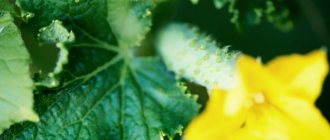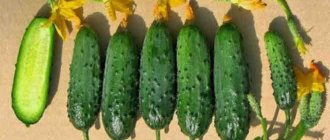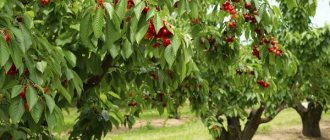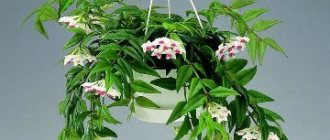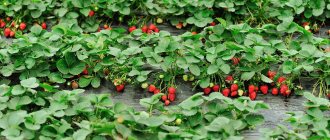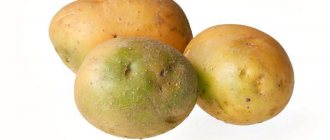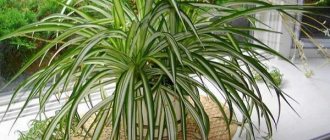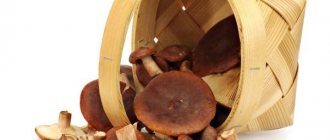Gardening » Citrus
0
1364
Article rating
Kira Stoletova
Most people know the following types of citrus fruits: lemon, tangerine, orange. But there are often citrus hybrids that are distinguished by their unusual appearance and taste.
Famous citrus hybrids
Ichangensis
Citrus ichangensis, Ichan papeda is a fairly slow-growing species of citrus that has a characteristic lemony aroma of foliage and flowers.
Hybrids:
- Ichang lemon (also known as shangjuan)
- Yuzu
- Kabosu
- Hyuganatsu
Ichan lemon (lat. Cítrus cavaleriéi, formerly Citrus ichangénsis) is an evergreen plant, a species of the genus Citrus. Distributed in China. Is the most cold-resistant evergreen citrus fruit
, can be used
as a rootstock
. Ichangensis is the most frost-resistant among all species of the genus Citrus. Critical temperature (complete death or freezing to the root collar) from -15 to -17 0 C.
Ichang lemon, according to another classification, is Citrus wilsonii, comes from the hybridization of Citrus ichangensis (from the mountains of southern China, winter hardiness up to -15C) and Citrus maxima (tropical citrus, can withstand no more than -3C). Shangjuan is another variety of the same Citrus wilsonii, more winter-hardy (down to -13C).
Belongs to the paped group
- citrus fruits, the petioles of which are bordered by very wide wings, similar to leaf blades. A tree or shrub, reaching 10 m in height in nature, with straight thorns on its branches.
The juice is sour and pungent in taste, the pulp is dry and almost absent. Seeds available. But the fruits are very aromatic, reminiscent of grapefruit (up to 10 cm or more). The large fruit has a taste reminiscent of a mixture of lemon and grapefruit, and is sometimes used as a substitute for them, although the taste of this type of citrus is still very specific.
As a rootstock it can be a good alternative to the deciduous trifoliate. In addition, the plant itself is very beautiful: densely foliated, with abundant flowering, and grows quickly.
Properties of tangerine essential oil
In medicine and cosmetology, essential oil has a fairly wide range of applications. It is obtained from the peel by cold pressing. One of the leading manufacturers is Lemongrass House (Thailand). In Russia, this product is produced by the Crimean Rose plant (Simferopol).
The components that make up the essential oil contribute to:
- strengthening the immune system;
- removal of waste and toxins from the body;
- relieving nervous tension;
- improving the condition of the cardiovascular, respiratory and digestive systems;
- reducing anxiety levels;
- increasing stress resistance.
For medical purposes, suitable for external and internal use, used for inhalation. Just 1 drop of oil added to water, tea or honey cocktail improves digestion and boosts immunity.
A few drops in the aroma lamp will perfectly clean and refresh the air, relieve excessive nervousness, drive away fears, and lift your spirits. An aroma medallion with 3-4 drops of tangerine oil will replace hot inhalations for coughs and runny noses, help relieve dizziness, relieve headaches and insomnia, and ease long-term mental stress.
We recommend that you read: How to eat kumquat correctly
The phytoncides contained in the oil help normalize blood pressure. Aromatherapy relieves symptoms of toxicosis in early pregnancy.
Tangerine essential oil is added to the massage base at the rate of 8-10 drops per 20 g of base. This composition has smoothing and lymphatic drainage properties. Blood circulation improves, fatigue goes away, pain and spasms in joints and muscles disappear. Recommended for swelling, stretch marks and cellulite. Abdominal massage using this oil will relieve discomfort and help relieve bloating.
Thanks to its antiseptic properties, it effectively heals minor wounds and burns, improves the condition of problem skin, and helps fight acne. Creams with the oil of this overseas fruit moisturize the dermis, smooth out wrinkles, fill the facial skin with a healthy glow, make it elastic and firm.
In perfumery, tangerine oil is used in combination with oils:
- lavender;
- neroli;
- bergamot;
- patchouli;
- roses.
Creates a festive atmosphere. It is one of the base notes in the perfume brands Escada, Far Away Soleil, Les Belles de Ricci, Dolce Gabbana By Femme, Hugo Boss Femme. Baths with tangerine essential oil relieve nervous tension and lift your spirits. All procedures using this product are safe; they are allowed for pregnant women, nursing mothers and children.
A few drops of oil applied to a sponge or napkin:
- get rid of unpleasant odors in closets;
- help cope with mold and mildew;
- They repel moths well.
It is recommended to store essential oil in a dry, cool, dark place, preferably in the refrigerator. If the seal of the packaging is not broken, the shelf life is up to 2 years. If storage conditions are violated, rapid oxidation occurs and the drug loses its healing properties.
There is only one contraindication to the use of this fruit - an allergy to citrus fruits. As a result of recent studies, it has been revealed that tangerine does not have high phototoxicity, and its moderate addition to creams and lotions for the face and body (5-7 drops per 15-20 g of cosmetic product) used during the day is acceptable. Contact with undiluted oil on the skin may cause a slight burning sensation that goes away after 3-5 minutes.
Tangerine extract is included in INNISFREE cosmetic products (Korea). A complete skin care complex: makeup remover, cream mask, tonic lotion, moisturizing face cream, day and night.
Clemapo delice
Clemapo delice.
Hybrid of Tangerine x Clementine Commune with repeated crossing with Tangerine Avana x Tangelo Mapo.
Early, medium-high variety. The fruits are clearly flattened, larger than ordinary tangerines (120 g) and usually ripen in October. The pulp has an excellent taste and does not contain seeds; moreover, the peel of this delicious orange fruit is very easily separated from the pulp.
Beneficial features
Citrus fruits have beneficial properties and a whole range of vitamins. Each tangerine hybrid has a high content of vitamin C and folic acid. Fruits are useful in the prevention and treatment of viral and colds.
Clementine can help improve hair structure, speed up metabolism, and give a fresh complexion. This citrus, among other useful elements, contains substances that can slow down the aging process.
Different varieties of clementines are consumed fresh or used in preparations and jams. Others are successfully used in cosmetology.
Mandarin Ortanic
Tangor is a flattened, not-quite-orange, red-orange in color, with a thick skin, the result of crossing a tangerine and a sweet orange. Tangerine ripens earlier than mandarin, and its citrus aroma is less pronounced than that of mandarin.
Ortanique - probably a natural tangor, found in Jamaica in the 1920s. Since tangerine and orange trees grew nearby, they decided that it was a hybrid of them. The name is made up of several words: or(ange) tan(gerine) (un)ique (orange, tangerine, unique).
Its other names are tambor, mandor, mandora.
The fruits are medium to large in size, the peel is slightly rough, orange in color, difficult to peel, with seeds. Caliber (54-74 mm).
Ortanik tangerines are the second most important and largest variety of tangerines in Greece. Unlike the Clementine variety, Ortanik is harvested without leaves. Thanks to the tight-fitting peel, Ortanic tangerines are well protected from damage.
Today, Moroccan tangerines of the Ortanik variety can be purchased in Russian stores. The variety is quite large. The fruits are very juicy, the taste is sweet and sour, very pleasant.
Recommended for those who love juicy citrus fruits with a slight sourness.
Calamondin
The now popular tangerine tree, the fruit of which is a sour tangerine crossed with a kumquat. The fruits themselves taste very sour, but due to their sweetish and very thin crust they can be eaten. By the way, you can eat these fruits only if the calamondin was grown yourself: if you buy such a tree in a store, keep in mind that it is treated with a large number of chemicals. They are often used in combination with other products due to their very unusual taste.
Read more: Red banana tomato variety description, planting and care
Calamondins are very convenient to grow, since it is possible even on the windowsill of your own apartment. Although, of course, in most cases it is just a beautiful ornamental tree, since many people buy it in flower shops and do not grow it themselves.
The now popular tangerine tree, the fruit of which is a sour tangerine crossed with a kumquat. The fruits themselves taste very sour, but due to their sweetish and very thin crust they can be eaten. By the way, you can eat these fruits only if the calamondin was grown yourself: if you buy such a tree in a store, keep in mind that it is treated with a large number of chemicals. They are often used in combination with other products due to their very unusual taste.
Calamondins are very convenient to grow, since it is possible even on the windowsill of your own apartment. Although, of course, in most cases it is just a beautiful ornamental tree, since many people buy it in flower shops and do not grow it themselves.
Orangequat Nippon
Nippon Orangequat is a rare and less common interesting citrus.
C. unshu x F. margarita. Orangequat (mandarinquat). Its origin is related to the tangerine, not the orange. Orangequat is a citrus, a hybrid of the unshiu mandarin and the Hawaiian variety of kumquat (“Meiwa kumquat”), created by the American Eugene May, introduced into cultivation in 1932.
Fruiting is less abundant than that of mandarin, but more abundant than that of kumquat. The fruits are orange, round in shape, larger than a kumquat. The peel is thick and sweet. The juice is bitter, but as the fruits ripen, their pulp becomes sweeter. The fruits ripen relatively quickly and stay on the tree for several months. Of x they are eaten whole, with the peel, like kumquats: the fruits are very tasty.
The species is frost-resistant and can withstand temperatures down to −12 °C.
This is an attractive ornamental tree, grows slowly, is small in size, convenient for keeping at home, indoors.
Tangerines for the New Year
It is known that tangerines first appeared on the New Year's table in China. It was in this country that the tradition of giving tangerines for the New Year arose.
The Chinese consider these fruits to represent financial well-being. Therefore, when they come to visit for the New Year, they always give two tangerines to the owners of the house. When seeing off the guest, the owners of the house, in turn, also present the guests with two other tangerines. Thus, they wish each other financial well-being.
Here too, in the former USSR, the tradition of displaying tangerines on New Year's holidays has taken root. Although for a long time in the Soviet Union people never saw these citrus fruits - this applies to the post-war 50s.
At the dawn of the Soviet Empire, the first tangerines for the New Year appeared in Abkhazia, where they were successfully grown. It was Abkhazian fruits that ripened in December and were distributed throughout the USSR on the main holiday of the country.
Citrus Sudachi
Sudachi is a frost-resistant sour citrus that can withstand temperatures down to -15 C. Sudachi ichandrin (papeda hybrid). Citrus sudachi Hort. ex Shirai. Citrus ichangensis X C. reticulata var. austere.
Considered a hybrid of papeda and mandarin, it is traditionally grown in Tokushima, Japan, on the island of Shikoku. The fruits can be picked young and Sudachi has a distinctive aroma that is different from Yuzu. Young fruits are used for cooking, green ones are often included in vinegar or seasonings, and are suitable as additives for many different dishes, especially fish. In dishes, Sudachi is usually cut into thin slices to decorate the main dish. The aroma is used to flavor soft and alcoholic drinks. The fruits are in great demand.
The Sudachi fruit is significantly smaller in size than Yuzu, the average fruit size is 3.8 cm wide and 3.4 cm high, the average weight of one fruit is 27.2 grams. The seeds are few, the average juice content is 34.4%, which is higher than Yuzu, so Sudachi is mainly used for making juice. The pulp in the unripe stage is light green in color, to green-yellow in ripe fruits. Sudachi is slightly more sour than Yuzu, averaging 5% citric acid.
Sudachi trees, usually with creeping shoots of moderate strength, are small to medium sized trees, with spines up to 5 mm in each leaf axil. The leaves are elliptical in shape, with a small winged petiole.
It is highly resistant to citrus weevils. Growth is slow. Trees live a long time. The tree produces an extremely large harvest.
According to the University of Riverside in California, the species may be derived from a hybridization of the citrus papeda and the mandarin C. reticulata.
The first mention of Sudachi is in the 1708 book by Kaibara Atsunobu.
The fruit is spherical, tuberous, about 4 cm in diameter, weighs about 30 g, usually harvested green, starting from August 15 until the end of September, later the fruit turns yellow and becomes sweet.
The essential oil contains special components including sudachiines. The quality of sudachi fruit is the subject of publications in Japanese and Korean sources: it is good for the skin, increases triglyceride levels, fights obesity, it is an anti-oxidative and diabetic juice, improves glucose and lipid metabolism, an excellent anti-inflammatory agent, including in inflammatory processes in bone tissue. A Tokushima University Graduate School publication shows that mice fed a diet supplemented with 1% zest powder had a noticeable weight loss effect.
In Japan, mass production began in 1956. There is micro production in California and Portugal.
The sugar level in the juice is higher than lemon, the sugar/acid ratio is more than 5, the usual quality level for this type of fruit. The taste is less tangerine than Yuzu, less resinous than Kabosu, it evokes a pleasant sensation of sweetness and acidity, a real miracle that is highly valued with grilled dishes (fish, mushrooms...), added to soy sauce and drinks ( alcoholic drinks, beer, soft drinks). Grated zest is also used.
Varieties of hybrid
From this video you will learn how to properly care for calamondin in the house.
This fruit includes several varieties. Which of them are considered the most popular, and how do they differ from each other? It’s worth finding out more about this. The hybrid of tangerine and orange is divided into the following several types:
- Spanish. The fruits of this variety can be both small and quite large. Each specimen contains several seeds;
- Montreal. This type of clementine is the most rare. It is mostly grown in Spain and Algeria. Each fruit, as a rule, can contain about 12 seeds-grains;
- Corsican. What is different about this variety of clementine? First of all, the color of the peel is orange-red. A noticeable advantage of this species is that it has no seeds.
The stunning aroma and unusual taste of the fruits of this hybrid, no matter what variety, will appeal to all lovers of exotic fruits. But this is not all the advantages of the species. Few people know that clementine is called an effective antidepressant. It’s worth stocking up on this “cure” for nerves.
Breeders at one time crossed many exotic fruits with each other. Each of them has improved taste and appearance characteristics, some of these plants can even be grown indoors. Among the most notable specimens, the following fruits are worth highlighting:
- Tangerine is a tangerine with sweet orange flesh. Its skin is quite thin and easy to peel;
- Mineola is a hybrid obtained by crossing tangerine with grapefruit. The taste of this fruit is sweet and sour. It is mainly grown in Israel and the USA;
- limandrine (limonium). This variety of exotic fruit appeared thanks to the combination of the species characteristics of tangerines and lemons. The peel of this fruit resembles a tangerine, but the taste is dominated by sourness, and this is already a characteristic feature of lemon. It is quite difficult to eat such a fruit in its pure form, but in China, for example, it is considered very popular;
- Orangelo is a fruit that was developed by crossing grapefruit and orange.
If the usual lemon or tangerine is already boring, pay attention to new varieties of exotic fruits. They will significantly improve your health and at the same time diversify your daily menu. Lemon crossed with tangerine or tangerine with grapefruit is a true delight. Diversify your diet and make your healthy eating even more delicious. Now lemon, tangerine or orange will not be the only exotic fruits on your table.
Everyone's favorite orange is a hybrid of pomelo and tangerine, which was bred and cultivated in China before our era, but lemon is not a hybrid plant. Oranges and lemons were crossed with other citrus fruits, producing a variety of plants with new properties and taste qualities of the fruit.
Very little is known about the origins of the true lemon-orange hybrid. They were first crossed together by the American researcher Frank Nicholas Meyer in 1908. Therefore, the species was called Meyer lemon. Ornamental Meyer lemon trees are popularly grown in China. In the United States, hybrid fruits have been eaten since 1990.
The origin and characteristics of the Meyer tree are controversial among breeders. Many people say it's more of an orange than a lemon. Others argue that the plant has much more properties of lemon than orange. Therefore, the mixed species received a comprehensive name - a hybrid of lemon and Meyer orange.
Meyer lemon is very popular in China
Meyer lemon is a rather rare plant; you won’t find it in our supermarkets. Meyer lemon-oranges are grown in private gardens, greenhouses and as ornamental plants in pots.
A mixture of lemon and orange has the following characteristics:
- The plant has average growth vigor. The trees reach two meters in height. With regular pruning, the height may be reduced. The tree has a voluminous crown.
- The leaves are dark green, smooth and shiny, have an oval, pointed shape. The leaves of the hybrid lemon have a pleasant smell.
- The flowers are white, purple at the base, and have an unusual aroma.
- The variety is frost-resistant. The plant can be grown in any region at home.
- Flower buds form even on the youngest shoots.
The first fruits can be obtained already in the 2nd–3rd year of the plant’s life. The Meyer mixture bears fruit all year round and produces a rich harvest. He doesn't need time to rest.
From one indoor Meyer tree you can collect about three kilograms of fruit per year. Pomeranians have the following qualities:
- The weight of one fruit is 100-150 grams.
- The fruits are round in shape.
- The color of the fruit is more yellow than that of a true lemon.
- The orange skin is thin, smooth and aromatic.
- The pulp is juicy, bright orange in color.
- The taste is moderately sour with a hint of noble bitterness.
The fruits of the Meyer hybrid are not as sour as the popular varieties of lemons sold in the supermarket. This is due to the chemical composition of the juice. It contains less citric acid and more fructose.
https://www.youtube.com/watch?v=
The fruits of the Meyer hybrid are rich in vitamin C, which makes them a valuable product. There is no need to talk about the benefits of vitamin C. It is involved in all biological processes of the human body.
One lemon weighs up to 150 grams
The tradition of growing hybrid lemons at home came to Europe from China. Growing a Meyer tree at home is not difficult. With proper care, the lemon will grow large and produce rich harvests.
What you need to consider when caring for lemon-orange:
- watering mode and air humidity level;
- optimal temperature conditions;
- fertilizing;
- pruning, crown formation;
- tree transplant mode;
- disease prevention.
The rules for caring for a Meyer hybrid differ little from the standard rules for growing citrus fruits. There are only a few characteristic features.
Lemon-orange hybrid is a frost-resistant plant. But this does not mean that he will feel normal and develop correctly at -10 degrees. He just can tolerate the drop in temperature. The optimal temperature for Meyer wood is 20–25 degrees. In winter, the temperature should be 10–15 degrees. It is necessary to protect the plant from drafts.
Direct sunlight harms all plants, even tropical ones. They burn the leaves. The lemon should be exposed to diffused, high-intensity light.
Read more: Orange Washington Navel indoors at home
Meyer lemon does well at 20-25 degrees Celsius
Meyer lemons don't like drought. The optimal regime for watering a plant depends on the season:
- In spring and summer, the plant is watered every other day;
- in autumn and winter, moderate watering twice a week.
It's not just the soil that needs to be watered. It is very important to mist the crown to maintain internal pressure in the leaves.
For watering and spraying, use only pre-prepared water. The water temperature should be 20–25 degrees.
Fertilizing
Fertilizer should be applied only during the period when Meyer lemon growth is active - from early spring to late summer. The plant needs nitrogen fertilizing. It is better to give preference to fertilizers in liquid form and combine fertilizing with watering.
Compost tea, fish emulsion, and certain types of algae can be used as fertilizers.
The acid-base balance of the soil in which the tree grows should always remain neutral.
Compost tea is good for feeding lemon
For the first three years of life, lemon-orange trees need to be replanted annually. Then you need to leave the plant alone for five years. Changing your place of residence will reduce the level of fruiting. Each transplant should be done in a larger pot so that the root system has enough room to grow. The lump of earth on the roots must be preserved. Drainage is placed at the bottom of the tub to prevent moisture stagnation. For hybrid lemon, use a standard citrus soil mixture.
The bush form is created at the stage of rooting the cuttings. There are three shoots left on it, directed in different directions. Bush lemon begins to bear fruit earlier, but also grows stronger.
Standard plants have a strong trunk without side branches. The rounded crown begins at a certain level of trunk height. The standard lemon looks very beautiful, but it bears its first fruits only in the fourth year of life.
Bush lemon begins to bear fruit earlier than standard lemon
Since this species has remarkable taste characteristics, today you can find interesting selections. What are the most popular varieties of tangerine hybrid?
There are three main known crosses of clementines:
- Spanish. It is divided into two types: the fruits of one are large, the other is small. It also differs in the number of seeds.
- Montreal. Perhaps the rarest clementine mixture. Grown in Spain and Algeria. The fruits contain more than 12 seeds.
- Corsican. The most delicious and popular fruit. It got its name from its place of growth. It is noted for its good taste and the absence of seeds inside.
This fruit is often found in winter: it appears on the shelves in November and remains until February. The fruits are very sweet, juicy and aromatic. It is believed that a hybrid of orange and tangerine is the best antidepressant, especially in such cold and dark times.
A distinctive feature is its brighter orange peel and flattened shape. The shelf life of clementines is quite long. You just need to create all the conditions for them, then they keep fresh for more than a month.
Tangelo Seminole
Seminole tangelo. Citrus reticulata x C. paradisi. Citrus tangelo JW Ingram & H E Moore.
Seminole is a citrus with large fruits (like grapefruit) with red-orange peel. It is very juicy, has a rich sweet taste with notes of grapefruit, tart, a little reminiscent of tangerine, but with a different shade. Trees of this variety require pruning.
Tangerine is a type of tangerine native to Morocco, Sicily, China and the United States. Tangerine is not a botanical term. As a rule, tangerines are red-orange, sweet, bright tangerines with easily peelable thin skin. Hybrids of tangerines with other citrus fruits are called tangelos.
. The first tangelos were produced in 1897 in Florida.
Known varieties of tangelo: Curly, or sunrise tangelo (K–Early, Sunrise Tangelo), Tangelo Seminole (Seminole tangelo).
How to distinguish a clementine from a tangerine
In the store, the fruits of a hybrid and a tangerine are quite easy to confuse. To avoid such a situation, when examining fruits you need to pay attention to the following points.
- Clementines are often smaller in size (not always, it all depends on the variety). It resembles a small orange.
- The pulp of the hybrid is sweeter and juicier.
- The peel of the clementine is softer, covered with large pores, and practically not connected with the pulp.
- The color of the hybrid fruit is brighter and more saturated.
Lemon Chimera Arantiata
Lemon chimera "Aranziata".
C. limon "Chimera aranciata". A chimera is an organism consisting of genetically heterogeneous cells, and this lemon is called a chimera for good reason. On one plant you can see shoots and fruits of both original forms and hybrid, diverse ones, with a mixture of characteristics. Therefore, the shape and taste of the fruits of the chimera are different (oval and pear-shaped). It looks very impressive!
The oval-shaped fruits that grow on the chimera are sour, juicy, aromatic, slightly reminiscent of Meyer lemon in taste. The pear-shaped fruits are medium acidic and juicy. The chimeric "lemon" is a fruit with a bright yellow skin and pale orange flesh that looks more like an orange than a lemon. The pulp is not entirely sweet, but it is far from the acidity of lemon. The other fruit is pale yellow, but definitely with a more orange tint, and the flesh is lemon-scented. Overall, it’s incredibly interesting: what will grow and what it will taste like!
Citrandarine
Citrandarine looks very strange in the eyes of our compatriots, which is no wonder, because breeders got it by crossing a lemon with a tangerine. In appearance, it looks more like a lemon - its fruits are elongated, although the color of the peel is orange, like that of a tangerine. At the same time, the fruit itself is quite convex to the touch. Citrandarine tastes sour, which is not surprising, because it “inherited” these sour notes from lemon.
Thomasville
Citranjequat "Thomasville".
Citrangequat "Tomasville". This hybrid was created at the beginning of the 20th century. It first bore fruit in Thomasville, Georgia, and is now called that. The fruits are medium in size, elongated or oval in shape, color from orange to orange-yellow. The taste is sour, there are seeds, there are not many of them.
The tree is quite vigorous, has thorns, and grows upright. Leaves of variable shape, often trifoliate. The fruits are large, sour, tasty (when fully ripe), so the variety is the most common variety of citranquats.
Difference between clementines and tangerines
It is not difficult to distinguish a clementine from a tangerine. Outwardly, they have considerable similarities in shape and color of both the fruit itself and the bush, but if you know where to look, the difference is obvious. The color of both the peel and foliage of clementine is much richer, thicker, and small hard thorns are noticeable on the cuttings.
The taste and aroma of clementine are somewhat more pronounced than that of its relative. This tangerine hybrid has a bright aroma and tastes sweeter and juicier.
Today you can find three subspecies of clementine on store shelves:
These fruits are imported under one name - tangerines, so they will have to be distinguished only by their external characteristics.
If you come across a very brightly colored product, without any seeds inside, with a pronounced taste and aroma, you can be sure that you have a Corsican clementine in your hands.
The Spanish variety can be larger in size than the regular mandarin. Its taste is not fundamentally different from the first variety of clementine, but contains on average no more than a dozen seeds. It is the rarest, grown mostly only in Spain. This fruit has the most delicate pulp and a sweet, pleasant smell.
Wakiwa (Wikiwa)
Wekiwa tangelo. Citrus × tangelo.
The fruits are medium-small, spherical, obovate or pear-shaped; color pale yellow; there are relatively few seeds. The peel is medium thick, smooth. The pulp is tender, juicy; the taste is sweet. Under favorable conditions, the skin is pink-red and the flesh is amber-pink.
The tree grows slowly, but at the same time it is productive; leaves are small, rounded-oval.
It is a hybrid of grapefruit and Sampson mandarin and hence the species is a tangelo. It is not commercially significant, but is of interest due to its novelty and pinkish skin color.
The fruit is juicy and sweet with a hint of grapefruit.
These are dwarf trees that grow well in pots and can be kept small and compact with judicious pruning. The fruits ripen in January.
Unlike other tangelos, the Wikiwa fruit resembles a pink grapefruit, but the flavor is more reminiscent of a tangerine.
Fruit hybrids: list of hybrids, crossing process, characteristics, photos
Currently, markets and stores sell a huge amount of fruits for every taste.
Surprisingly, many of them are hybrids, meaning that they were developed by breeders.
The crossing process can last more than one month or even a year, but as a result, people get new fruit hybrids that have excellent taste and benefit our health.
How does crossing occur?
The process of hybridization is aimed at creating new breeds of animals and plant varieties. In the latter case, the method of artificial pollination is widely used. For this purpose, healthy parent organisms are selected that are resistant to viral diseases and contain a large amount of useful substances.
Breeders collect pollen from the plant chosen as the parent organism. The anthers are knocked out of the buds and dried on paper. After they crack, the pollen is collected and placed in clean glass vials. At the same time, the anthers are removed from the mother plant.
The buds are covered with gauze so that bees cannot pollinate the flowers. The resulting pollen is applied to the stigma of the pistil. If fertilization is successful, a fruit with hybrid seeds will soon set.
In the fall, they are planted in the ground and, if successful, the next year hybrid seedlings are formed, which contain characteristics of both parent organisms.
Pluot
This hybrid is not very well known in Russia, but it is impossible not to talk about it. It gets its name from the English names plum and apricot (plum and apricot, respectively).
Pluot is more like a plum, and another hybrid of these two fruits, aprium, is very similar to an apricot.
Pluot can be pink, green, purple or burgundy in color, and the flesh color varies from white to deep plum.
The fruit hybrid was developed through the work of Californian breeders. It happened in 1989, when workers at a local nursery called Dave Wilson Nursery decided to create their own varieties of fruit.
To this day, pluot producers are charged a royalty of $2 per seedling (about 125 rubles). Currently, more than 11 varieties of pluot are known.
They are widely used in the food industry: desserts are made from the fruits, delicious juice is extracted, and they are used in winemaking.
In fact, pluot is not only a hybrid fruit. This name belongs to a brand that sells products created based on the work of the American geneticist Floyd Zeiger. produces the following hybrids:
- Aprium, developed by crossing an apricot and a plum. It shares more of the characteristics of the first fruit than the plum, which is how it gets its name. There are 2 varieties of this fruit. The fruits are quite dry, not too juicy. They have wonderful taste and a light orange aroma.
- Peachplum is a hybrid of peach and plum.
- Nectaflam, which has the characteristics of nectarine and plum.
Nashi
What fruit is a hybrid of a pear and an apple? This is Nashi, which was developed in Asia. Due to the fact that it was first grown in Asia, it is known by other names: water pear, sand pear, Japanese pear. In appearance, nashi is difficult to distinguish from an apple.
The peel can have different colors, ranging from a pale green tint to green. Inside, the hybrid is similar to a pear: it is just as crispy and juicy.
The advantage of neshi over ordinary pears is that the fruit withstands transportation better due to its hard peel.
The hybrid has excellent taste. It contains a large amount of water, so neshi lovers recommend eating the fruit fresh or adding it to salads.
Fruits do not respond well to heat treatment due to excess moisture. The fruit is often served as an appetizer with wine.
More than 10 varieties of nesha are known, which are cultivated in the USA, Chile, France, Australia, New Zealand and even Cyprus.
Yuzu
Fruit hybrids, the list of which is presented in this article, often have unusual names.
This feature has not escaped the Japanese lemon, popularly called “Yuzu”, bred by crossing the Ichang papeda and the mandarin. The skin of the fruit can be yellow or green and has a lumpy texture.
The fruit gives off a strong aroma. The size of the hybrid is similar to a tangerine. It tastes very sour, which did not stop yuzu from gaining popularity in Japan.
In the Land of the Rising Sun, it has been widely used in the food industry since the beginning of the 7th century. Later, residents of China and Korea learned about it. Japanese lemon zest is part of popular Asian seasonings.
It is used to prepare fish dishes, noodles and miso soup. All kinds of drinks, syrups, jams and various desserts are made on its basis. Yuzu juice is an excellent substitute for vinegar. It is added to ponzu sauce.
However, Japanese lemon is used not only in preparing dishes and drinks. Every year, on December 22, the day of the winter solstice, Japanese residents take baths with the addition of yuzu juice. It is believed that this will protect them from harm and drive away evil forces from their homes.
If after water procedures you eat a little pumpkin, which also symbolizes the sun, then a person will not suffer from a cold for a whole year. Pets can also be bathed in Japanese lemon juice.
The remaining water should be used to water the plants located at home.
Grapefruit
Do you know what the grapefruit is a hybrid of? It was obtained by crossing oranges with pomelo, although the birth of this hybrid occurred without human intervention. In fact, the crossing occurred naturally, and the fruits were discovered in 1750 in Barbados completely by accident.
The fruits got their name for a reason, because they grow in large clusters. Because of this, grapefruit was given the name “grape fruit.” The fruits may have a yellow, orange, or reddish color. There are even varieties with white and pink skin! The color of a grapefruit does not affect the taste of the fruit.
The hybrid brings great benefits to humans, because it stabilizes metabolism and has a positive effect on overall well-being. No wonder they recommend eating it if you want to get rid of extra pounds. In addition, red and pink varieties of grapefruit have a higher content of vitamin A.
Agli
Some fruit hybrids are developed from existing hybrids. An example of such plants is agli, which was obtained by crossing a tangerine and a grapefruit.
The fruits are quite large, the wrinkled skin has a greenish-yellow color. The pulp of the fruit is very juicy and sweet.
To a person who does not know that agli was created on the basis of grapefruit, it may seem that the fruits are hybrids of lemon and tangerine.
Graple
Some fruit hybrids were bred randomly, while others took a lot of effort from breeders to create. So, scientists spent a lot of time working on growing grapes.
This fruit is a copy of an apple in appearance, but tastes like grapes. It was bred from these two plants. It is larger than apples, the flesh is sweeter and crunchier. Graple is not just a hybrid with good taste.
The trademark of the same name has been registered.
Bloody lime
Blood lime was created by hybridizing an Ellendale mandarin with a finger lime. The fruits have an unusual color: the pulp, peel, and juice are blood red, which gives the plant an unusual appearance. To tell the truth, this fruit hybrid has a very sour taste, which not everyone will like.
The hybrid variety was developed by crossing a lemon and a tangerine. It received the name "Rangpur" in honor of the city in which it is grown. The settlement is located in Bangladesh.
The fruit can be used instead of lime in many dishes. The fruits are not too large, they have a sour taste.
Rangpur is a popular houseplant in the United States and is used as a rootstock in other countries.
Nectacotum
This fruit was obtained by crossing plum, nectarine and apricot. The skin is reddish-green, the flesh is light pink. The fruits taste sweet; professional chefs advise adding them to various salads.
Pomelo, or shaddock
One of the most unusual hybrids is pomelo. Its fruits weigh on average about a kilogram, and in their homeland, the Philippines, they sometimes grow to the size of a watermelon. What fruit was the pomelo hybrid bred from? It is known that grapefruits and oranges were used when breeding this plant.
The pomelo gives off a strong aroma that can be felt at some distance. The peel is moderately dense and shiny, there are no compactions or growths on it. Ripe fruit has a uniform yellow or green color.
Pomelo has a beneficial effect on intestinal health. The fruits contain iron and potassium, which are necessary for the production of hemoglobin in the blood and stimulation of the heart. The fruit is rich in vitamins, so it can be eaten to prevent colds and cancer.
Orangelo
The round fruit is similar in size to a grapefruit. The pulp peels easily from its shiny yellow skin. Inside, the fruit is divided into several parts, the number of which varies from 9 to 13. The pulp has a bright yellow-orange color. The taste of the fruit is slightly sour, but not bitter. In fact, after tasting orangelo, you can easily understand that this fruit was developed from grapefruit and orange.
Nectarine
What fruit is everyone's favorite nectarine a hybrid of? Experts are confident that this fruit was obtained as a result of a mutation of peaches during self-pollination, that is, it is not a hybrid. However, there is another point of view, according to which nectarine was developed as a result of crossing peaches with plums.
Externally, the fruit resembles a peach; the main difference is that the skin of a nectarine is smooth and has no lint. The pulp is quite hard. Color varies from light yellow to cherry shades.
The fruits contain a large amount of vitamins and useful micro- and macroelements, including phosphorus, potassium, and vitamin A.
Lemato
There are hybrids of fruits and vegetables, they are called lemato. The fruits of this plant look very similar to tomatoes, but they give off the aroma of roses and citrus fruits, namely lemon. The skin is light red because it contains a small amount of lycopene. The advantage of Lemato over regular tomatoes is that fewer pesticides are used when growing them.
This unusual hybrid was developed thanks to Israeli scientists. They tried to prove to the whole world that a vegetable can have a fruity aroma, and they succeeded.
An experiment was conducted in which 82 people tried Lemato. As a result, the majority of respondents, namely 49 respondents, preferred the hybrid.
29 people noted that a real vegetable cannot be compared to lemato. The remaining people found it difficult to choose.
Abricotine
A hybrid of what – a fruit with that name? Based on the naming, we can assume that nectarine and apricot were crossed to produce apricotine. This is probably true, because the fruit has very juicy pulp, which is easily separated from the seed, like a nectarine.
The skin is smooth and soft. In the markets they offer to buy the hybrid fruit apricotine, which cannot be said about nectacote: the first name is better known to domestic consumers. However, nectacote is a hybrid of the same fruits, but it is more similar to nectarine.
It has good taste.
According to information from Wikipedia, apricotine is a hybrid fruit. There is also a popular liqueur of the same name. It is prepared from apricots or their seeds. The drink made from the pulp tastes quite sweet.
It is used for making desserts and other soft drinks. The stone-based liqueur “Abricotin” has a bitter almond flavor.
In addition, this is the name of liqueur essence, which is used in the food industry in the production of caramel.
Source: https://fb.ru/article/407300/gibridyi-fruktov-spisok-gibridov-protsess-skreschivaniya-harakteristiki-foto
Flying dragon
Citrus Poncirus Trifoliata Flying Dragon. Flying Dragon. Latin name: Trifoliata Pontsirius Monstrosa.
The unique exotic citrus Flying Dragon is a deciduous, very dwarf tree with an attractive shape, curved branches and hooked thorns.
Flying dragon, also known as Japanese bitter orange, is the hardiest close relative of the citrus fruit. Native to China and Korea, it is a deciduous shrub with twisted green branches and menacing, curved thorns. The green thorny lace of the branches resembles the shadows and silhouettes of flying dragons.
The Flying Dragon fruit is yellow, about 5 cm in diameter, the juice is similar to lemon. In China, the Flying Dragon is used as a compact, impenetrable hedge. The variety is unpretentious.
Suitable as a dwarf rootstock for citrus fruits, causing very early flowering and fruiting. Trees grown on the Flying Dragon rarely exceed 1.5 meters in height and often bear fruit in the year of sowing.
The fruits of this species ripen in late autumn.
Flying Dragon grows up to 2 meters in height in nature, a plant with a moderate growth rate. The trees require very little pruning compared to other fruit trees. Requires a fairly sunny location, fertile, well-drained acidic soil, and regular deep watering is recommended. The variety is frost-resistant and will survive low temperatures, down to -20C. By spring, fragrant white flowers with five petals adorn the bare stems. In summer, green fruits appear among the glossy green leaves. Each leaf consists of three oval leaflets, and is therefore called trifoliate. In autumn, the leaves turn yellow, and around this time the yellow-gold fruits ripen. The fruit may remain on the tree through the winter.
Description of tangor
The tangor tree resembles a tangerine in appearance. The plant is up to 3-4 m high and has a lush crown. The leaves are dark green, covered with a waxy coating.
- inferior in size to an orange, but larger than a tangerine;
- diameter - about 12 cm;
- shape - round, flattened, reminiscent of a globe;
- peel - thin, light orange;
- the skin fits tightly to the pulp and is difficult to separate;
- weight - from 80 to 120 g;
- a large number of seeds - from 10 to 20.
In terms of nutritional value and content of useful elements, it occupies an intermediate position between its parents - orange and tangerine.
Takle
Tacle (Citrus sinensis x Citrus clementina).
While Sicily supplied the world with its citrus fruits, its most valuable treasure was hidden in the Acireale Research Center for Citrus and Mediterranean Crops: Tacle, a new type of citrus fruit that was created about more than ten years ago.
The Takle fruit looks like a large tangerine or slightly crushed orange and is actually a cross between an orange and a clementine. To be precise, this hybrid is derived from the Montreal Clementine variety (which is itself a hybrid) and the Tarocco orange.
Tacle has a sweet taste, the flesh is firm and very juicy, without seeds. Shiny, bright orange peel. It is ideal for fresh consumption and juicing.
An aromatic citrus fruit that perfectly quenches thirst, mottled with reddish hues due to the characteristic pigmentation of anthocyanins. The fruit weighs on average about 150 g and has a flattened shape. Takle fruits are harvested from the end of December to the end of January, they have a special taste, similar to a mixture of clementine and Sicilian orange.
Thanks to its characteristic appearance and sweetness, Tacle stands out as a citrus fruit with a pleasant aroma and taste and valuable organoleptic characteristics, vitamin-rich pulp and low fat content. Tasty and healthy!
Truth and deception about crossing
Often artificially bred citrus fruits are passed off as completely unusual fruits. Sellers offer a mixture of orange and pomegranate, although this is basically impossible. An ordinary red citrus variety with a rich hue or a red grapefruit is passed off as a non-existent fruit.
By doing this they only attract attention in order to sell the product. And it is possible to cross only varieties of one type: citrus fruits with citrus fruits. This is often done on the basis of kumquat (also a type of citrus fruit), and you get lemonquat, limequat, and orangequat. Kumquat fruits are also consumed in their pure form.
Growing new fruit-bearing plants from fruit seeds is impossible. They are bred only by professionals, so the plant will not bear fruit at home.
Pomum Adamo
Pomum Adami Citrus aurata Risso. Adam's apple, d'Adam, du Paradis, Pomme d'Adam, Pomme du Paradis, Pomo d'Adamo. Adam's apple. Italian variety.
Pomum Adami is a citrus with huge fruits. It was long called Pomm ď Adama ("Adam's apple"). According to Gallesio (1811), it belongs to the Lumia group of hybrids. It could be a cross between orange tree and lemon cedrato. Marco Polo discovered this variety in Persia (now Iran) in 1270, and the Arabs brought it to Palestine in the 12th century. It was also mentioned in the book History of Jerusalem by French author Jacques de Vitry in the early 13th century. The book claims that de Vitry saw it in Palestine during the Crusades and Holy War. This variety was also later described by other famous botanists.
According to molecular analysis done at one plant by Italian researchers, the original mother plants are pompelmousse, citron and lemon.
The tree grows to medium height and is quite wide, has a globular crown with typically non-thorny branches or in some cases rarely a few thorns on the branches. The large, spear-shaped leaves are oval, sometimes with slightly jagged edges. The flowers are large, very attractively scented, and creamy white with a hint of purple. They usually grow individually, but at the tips of young shoots almost exclusively in clusters.
The spherical fruits are quite large, with or without a tubercle, sometimes with a narrow neck. The peel is light lemon-yellow, bitter. The pulp is practically inedible, very sour.
Tsitranzheremo
Microcitrus Citrangeremo.
Australian microcitrus.
This plant grows actively, seedlings can be used as rootstock. The plant is compact and bushes well.
Citrangeremo is a natural hybrid of Citrange x Eremocitrus glauca. This variety was brought to Europe from Germany. The leaf is small, oblong, reminiscent of a willow leaf.
The variety is of Australian origin, should withstand heat and dry air well, compact, excellent for indoor growing.
Glauka x shequasha
Microcitrus Glauka X Shequasha. C.Glauca x Shekvasha.
A hybrid of Australian desert lime and tangerine.
Glaucas easily form hybrids, this is one of them. Shekwasha is a tangerine (Shekwasha, Citrus depressa Hayata, Citrus pectinifera Tanaka).
It grows well, the crown is thick. The tree is very decorative.
The tree is vigorous, with a rounded crown. The fruits are very small, orange in color, flattened, with a very thin and aromatic peel. The pulp is soft, slightly viscous, with a very pleasant taste.
Limandrins
Otherwise, these exotic fruits are called limonia. As the name implies, they are obtained by crossing a lemon and a tangerine. They also look very unusual: they look like a tangerine, but their peel is different in color - it is absolutely yellow, just like the second “parent” of the lemon. They also inherited their taste from him. Limadrins are very difficult to eat because they are incredibly sour. Although they are loved in the east, in China it is difficult to find a citrus more popular than limandrine.
Eremoorange
Natural hybrid of C. glauca (Australian desert lime) x C. Sinensis (orange).
Eremoorange. The tree grows vigorously and gives good growth. The leaves are like those of microcitruses, but those of orange have larger leaf blades. Seedlings of this variety grow quickly and have deep taproots.
The fruits are small (2-4.5 cm in diameter), drop-shaped, elongated, the peel is bright yellow.
In the Marseille area, Eremorange can withstand temperatures down to minus 15 degrees in open ground.
The fruits have a sharp, sour taste, with a strong tangerine aroma and hints of orange. Suitable for making marmalade of the highest quality.


